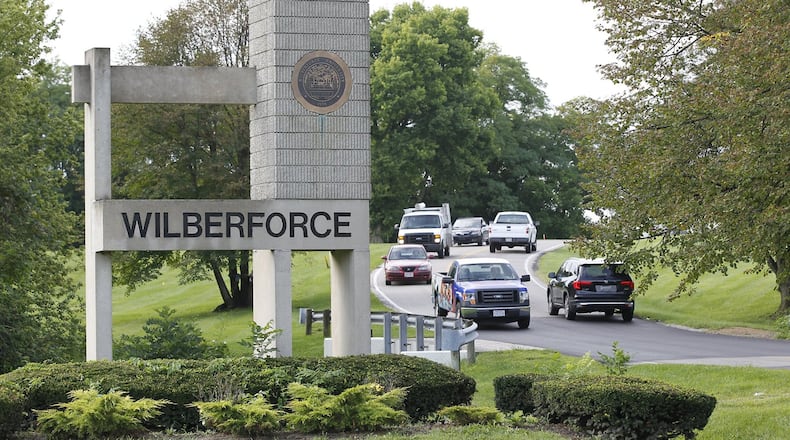“We’re not rebranding; we’re now finally saying, ‘Look at us, look at this institution that’s been around for 154 years, that we’ve done the work in terms of looking at our future,’” he said. “But we also have something very unique about how we began, and so as you’re interested in HBCUs, take a look at us. Take a look at the very first (private) HBCU.”
The plan to brand and reintroduce the university was hatched about two years ago around conversations about Wilberforce’s value proposition ― or what it has to offer to potential students.
The school’s leaders had been deliberate in answering the question and developing a strategy. However, the plan was accelerated after COVID-19 became a global pandemic. This year’s ongoing national conversation on race and social justice was also a factor.
“It was just a wonderful opportunity to really apply some discipline and rigor,” Pinkard said, “to answering the questions of who we are, what we stand for, what we do well, what we have the potential to do well, and funneling the appropriate resources on both human and financial in those areas, so that we can be a high performing institution of the future.”
The president and his team landed on a value proposition that says, “Wilberforce will be a high performing liberal arts institution with a college-to-career and entrepreneur intention, focused on high potential students.”
In five years, based on the strategic plan, Pinkard expects the university to be fiscally sound, have a solid foundation and be operationally efficient. School leaders also hope to continue meeting enrollment and retention goals, stronger academic programs and for the school to be viewed as a well respected, high performing institution. The school has a ways to go, but officials are confident in their plan.
Pinkard and his team in recent months implemented or relaunched academic programs that focus on three areas:
- Credentials for Leadership in Management and Business ― CLIMB ― which is aimed at working adults who wish to pursue an undergraduate degree.
- Master’s program in clinical rehabilitation counseling for those treating people who are addicted to opioids.
- Center for Entrepreneurship and Innovation, which prepares students who are interested in becoming entrepreneurs.
“We are in our humble beginnings,” Mark A. Wilson, chair of the university’s board of trustees, said in September.
Wilberforce’s enrollment is currently 479 students, but the school is aiming for 648 next fall. School leaders plan to increase the student population between 8% and 10% annually, with a goal of about 1,200 students by 2025. The totals include undergraduate and graduate students, as well as adult learners.
An important part of the strategic plan is fundraising, Pinkard said. For the first time in several years, the school has a vice president of institutional advancement who is devoted to soliciting financial gifts. They’ve been in talks with corporations and foundations, many of which have given generously to predominantly Black institutions this year.
“There is an awakening among the philanthropic community to HBCUs,” Pinkard said. “We’ve seen over the last (few months) incredible generosity aimed at this sector. (That’s) part of the reason why we’re about to begin this branding strategy to really leverage Wilberforce as a significant institution to get in front of these important individuals and foundations, and corporations to seek funding.”
In the past decade the institution faced financial woes and a few controversies surrounding past presidents . But those past issues should not influence anyone’s opinion of Wilberforce, Pinkard said.
The school bounced back each time, he said, and it intends to do so again, regardless of the additional challenges brought on by the COVID-19 pandemic.
“We will continue to be focused and disciplined on the work (to build up Wilberforce),” Pinkard said. “And so I say this almost in a challenging way: Watch us, just watch us work.”
About the Author

